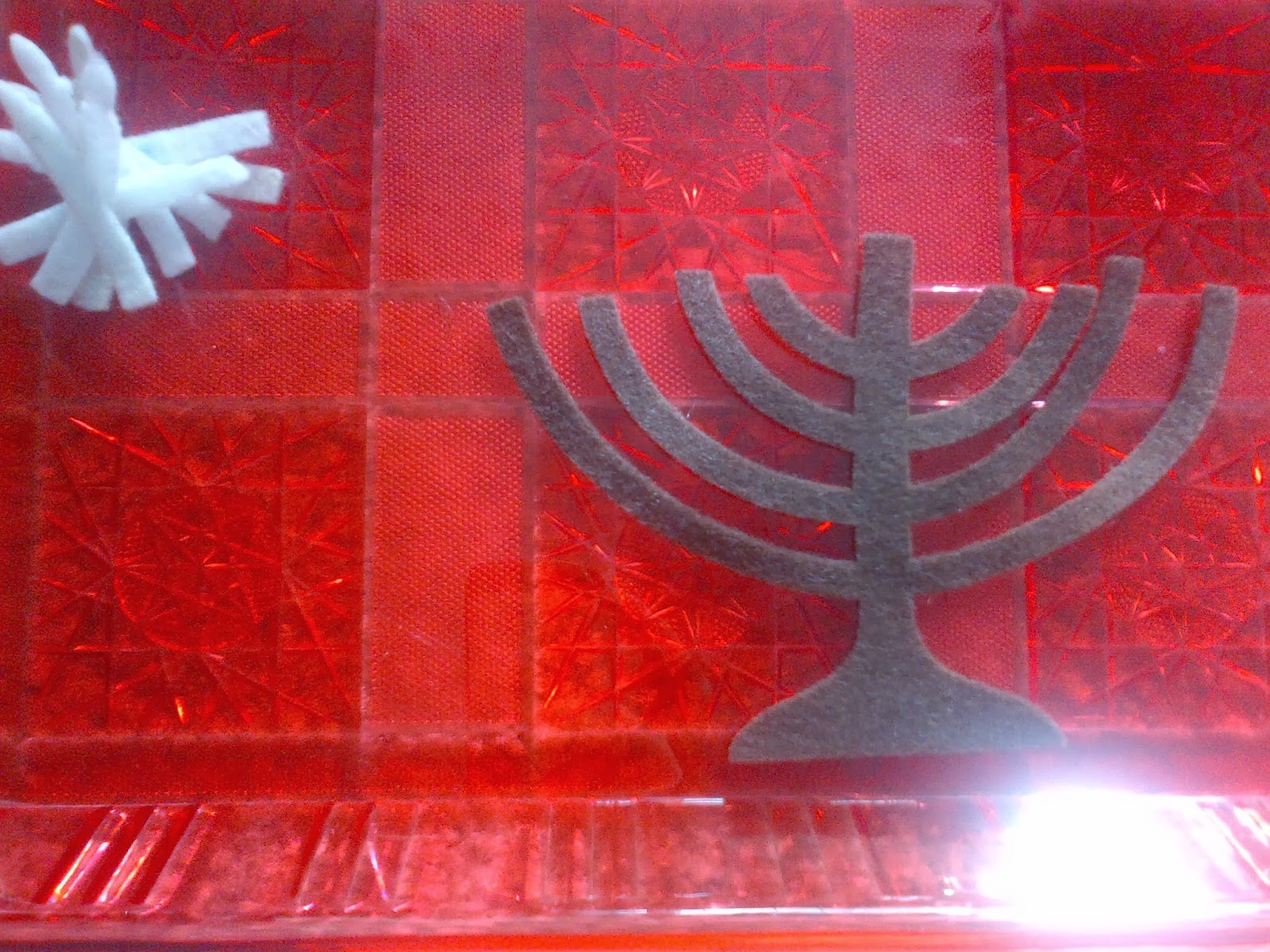Happy Hanukkah
Hanukkah begins at sunset tonight and will last for eight days and nights until December 5th. We’re not Jewish, but I wanted to do eight activities to raise Ella’s cultural awareness and appreciation of Jewish culture. Here is what we’re getting up to:
1. Making and painting our own Driedls
 |
| Late night driedl playing |
A driedl is a four-sided top with four Hebrew symbols on each side which collectively mean “A miracle happened in Israel.” Instead of putting these symbols on the driedl, we put the numbers 0-3 on each side, but if Ella was older I would have used the correct symbols.
While waiting for our driedl to dry, I taught Ella the “Driedl Song”:
I made you out of clay;
And when you’re dry and ready;
Then Dreidel I shall play.
2. Understanding probability
Traditionally, children play for a pot of foil-covered chocolate coins. For our game, “0” meant no chocolate, up to “3.” I would encourage parents working on fractions to bring this into the game! This a great way to display probability, introduce the number zero, and the fractions “1/2” and “1/3.”
3. Counting to eight OR Ordering numbers one to eight.
I made a felt menorah with 8 candles and encouraged Ella to place them on the menorah (fine motor) and count as well. I tried to write numbers 1-8 on the felt, but neither a pen nor a marker worked well, so I just left them blank.
4. Three Blessings.
On the first night on Hannukah, three blessings are said, so Ella and I started working on saying three blessings every day. This falls under the “spirituality” aspect of our curriculum, but also gives a tangible experience of “1-3” and also improves language by encouraging Ella to verbalize her own blessings. A blessings collage would be a great art activity!
5. Star of David
I introduced Ella to the Star of David, as she is obsessed with shapes! I showed her how to layer two triangles to make her own Star, and we counted the points (6) and side (12) and compared them to a regular star (5 points and 10 sides).
With an older child, this would be a great introduction to the metal insets — using the Triangle inset to make a Star of David. We are not using this material yet.
6. Making Latkes and Sufganiyot.
Ella was able to help with peeling, grating, and squeezing the starch out of the potatoes, and then with the piping of our homemade jelly and sifting of icing sugar onto the sufganiyot (jelly donuts). We discussed how oil was previously used for lanterns, and the many uses that our family uses oil for: polishing, cleaning, health, and eating. We also planned to make homemade matzo ball chicken soup and unleavened bread.
7. Oil and water on the Lighttable
I dyed the water blue as representative of the white and blue traditional colours of Hanukkah and encouraged Ella to mix them on the light table. This is a great science experiment and with an older child, you can discuss the properties of density and polarity. I used it as an introduction to washing clothes, explaining how soap is needed to bind to the oil and remove it from dirty laundry. Once we added just one drop of soap to the bin, the oil quickly moved to the sides of the bin. Very cool!
You could also let your child play with their hands in the bin, and then try to wash it off with water and note how the oil seems to stick to their hands, and then see how effectively soap removes the oily feeling — great reminder how important soap is for proper washing!
8. Making our own candles
This is still on our to-do list for this week, but we will be using beeswax instead of soywax this time!
As a bonus, if you had a set of silver candlesticks, this would be a great opportunity to introduce silver polishing — alas, we don’t!
How will you be celebrating, or teaching your children about, Hannukah?






